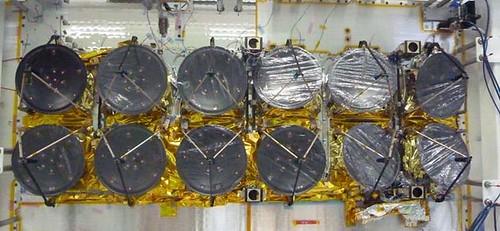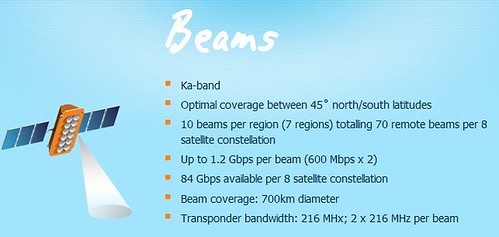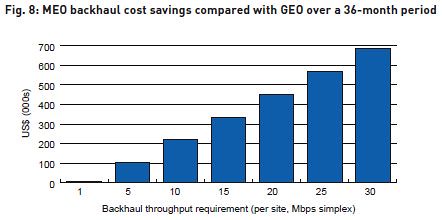Two WiFi hotspots from satellite phone providers Iridium and Globalstar were announced last week. They’re more expensive to buy and use and slower than conventional cellular wireless modems, but they can work virtually anywhere, world-wide.
 Iridium’s mobile hotspot called Go lets users “make calls, get their email, text and use some apps, even when terrestrial networks are non-existent, unreliable or costly.”
Iridium’s mobile hotspot called Go lets users “make calls, get their email, text and use some apps, even when terrestrial networks are non-existent, unreliable or costly.”
GigaOM reports that Iridium’s resellers will ultimately set their own rates, but standard plans might include metered options for $35 per month and an unlimited voice and data option for $115 per month. A $35 plan could potentially include 150 emails, 15 voice minutes and a preset amount of weather updates and picture uploads.
Iridium’s Go device will be available during the first half of 2014 and cost around $800.
 Globalstar’s Sat-Fi, a new voice and data service, permitting numerous individuals to communicate through a single Sat-Fi hot spot using their existing WiFi devices and phone numbers, including Wi-Fi enabled smartphones, tablets and laptops.
Globalstar’s Sat-Fi, a new voice and data service, permitting numerous individuals to communicate through a single Sat-Fi hot spot using their existing WiFi devices and phone numbers, including Wi-Fi enabled smartphones, tablets and laptops.
Globalstar is expected to receive final FCC certification of Sat-Fi during the second quarter of 2014, with shipments starting shortly thereafter. Globalstar says their second-generation constellation is now completely in service with duplex capabilities fully restored.
 The global Inmarsat-4 network delivers BGAN and BGAN Link via geosynchronous satellites. Inmarsat and LEO-based data satellite provider ORBCOMM are also jointly developing satellite M2M products with a series of interchangeable modems powered by ORBCOMM’s OG2 VHF network and Inmarsat’s L-band network.
The global Inmarsat-4 network delivers BGAN and BGAN Link via geosynchronous satellites. Inmarsat and LEO-based data satellite provider ORBCOMM are also jointly developing satellite M2M products with a series of interchangeable modems powered by ORBCOMM’s OG2 VHF network and Inmarsat’s L-band network.
 ORBCOMM will leverage off Inmarsat’s IsatData Pro (IDP), a satellite packet data service offering the highest payload and lowest latency in the market, and BGAN M2M, a 3G service offering real-time IP data up to 512 kbps on a single global SIM.
ORBCOMM will leverage off Inmarsat’s IsatData Pro (IDP), a satellite packet data service offering the highest payload and lowest latency in the market, and BGAN M2M, a 3G service offering real-time IP data up to 512 kbps on a single global SIM.
Intelsat, which operates the world’s largest fleet of commercial satellites, also offers satellite linked WiFi hotspots. Enterprise customers like airlines, use OEMs like Row 44 to provide airline WiFi.
Intelsat announced their EpicNG satellite platform, will feature a complementary overlay to their fixed satellite network. It will be fully integrated with Intelsat’s existing satellite fleet and employ C, Ku and Ka-bands, wide beams, spot beams, and frequency reuse technology to provide world-wide broadband coverage. The first two satellites, Intelsat 29e and Intelsat 33e, are expected to be operational in 2015 and 2016, and feature wide coverage and high throughput capacity.
Intelsat’s throughput per satellite is roughly similar to Inmarsat’s Global Xpress – using super-fast, Ka-band and spot beams.
Meanwhile, O3b Networks has launched the first four satellites of a constellation of 8 into medium-orbit, with the 2nd four satellites expected to launch in Q1 2014. Using a medium earth orbit (MEO), 8,000km away from Earth, reduces latency to approximately 100 milliseconds.
O3b Networks’ satellites are equipped with steerable antennas to remain locked onto a fixed location on Earth as the satellite passes overhead. Huawei and O3b have enabled full 3G voice, data and video over O3B’s satellites.
Related DailyWireless Space and Satellite News includes; First Four O3B Satellites Launched, Google Backhaul: Balloons & Satellites, O3B: Funded for Launch, Arianespace: Busy 2013, Gilat Does Satellite Cell Backhaul, SkyTerra 1 Launched, Broadband Satellites: Black Hole?, Intelsat Announces EpicNG Satellite Platform , Satellite 2012, Formation Flying Swarmbots, Flying Cell Towers,
Posted on Thu, 06 Feb 2014 17:51:45 +0000 at http://www.dailywireless.org/2014/02/06/...ite-links/
Comments: http://www.dailywireless.org/2014/02/06/.../#comments




